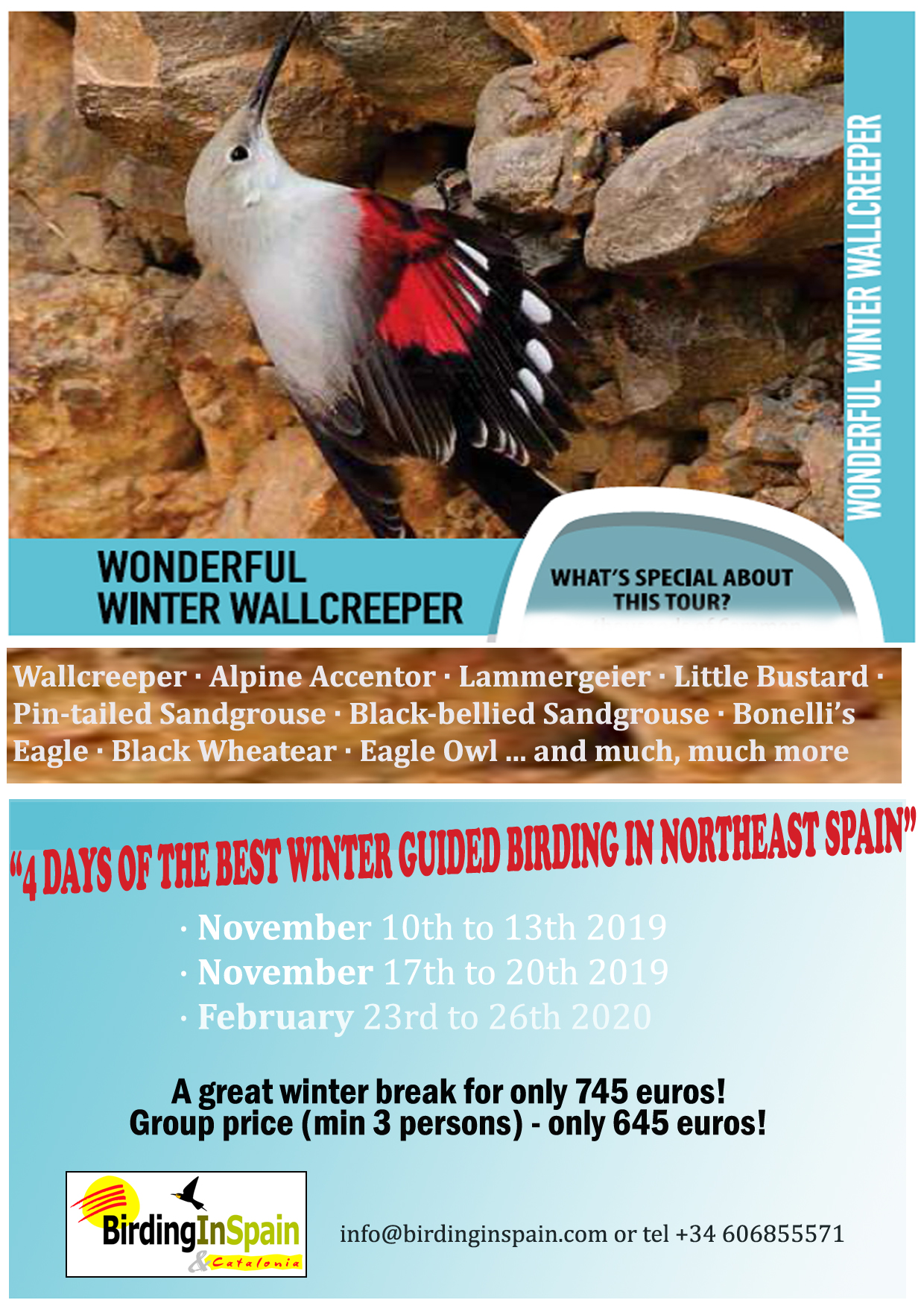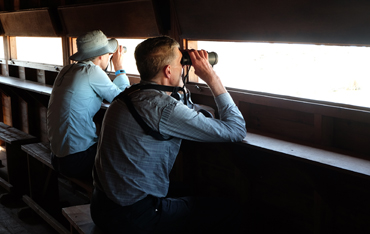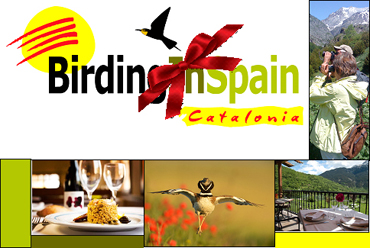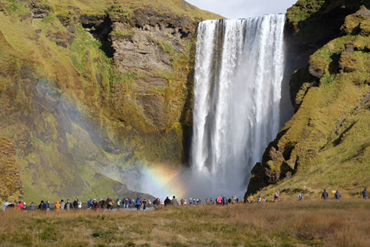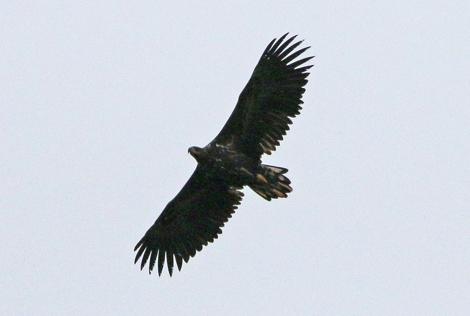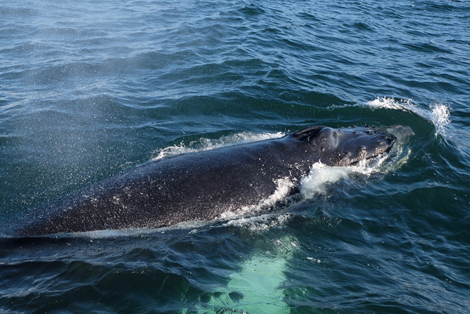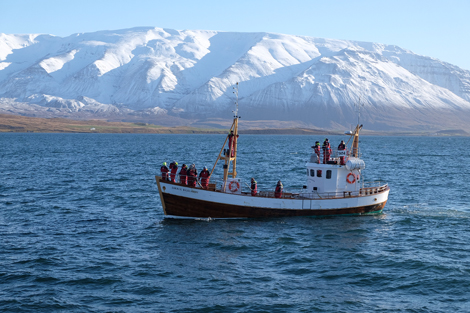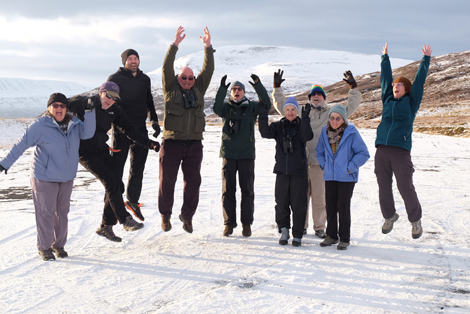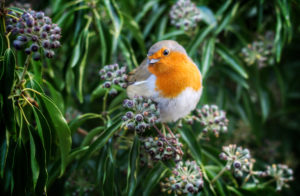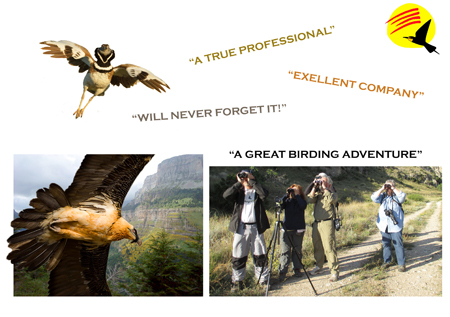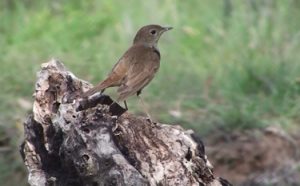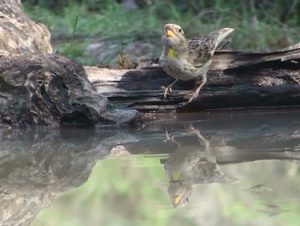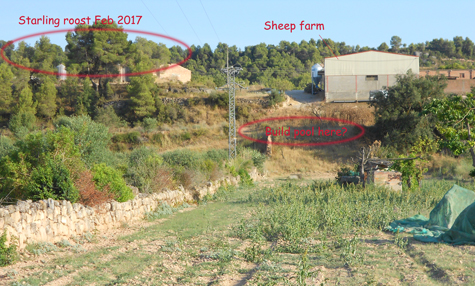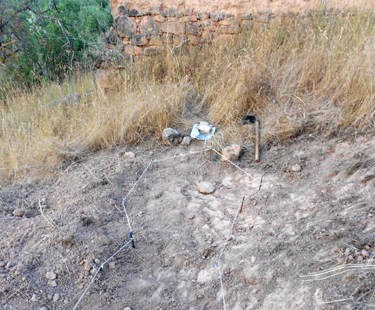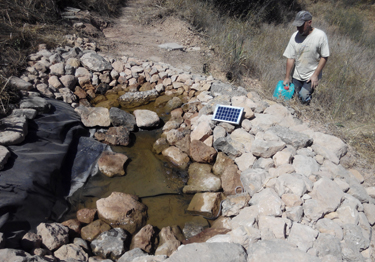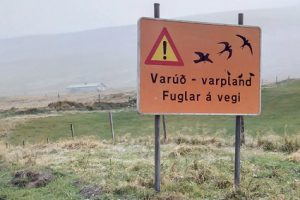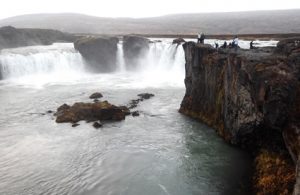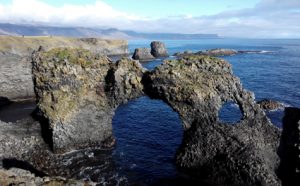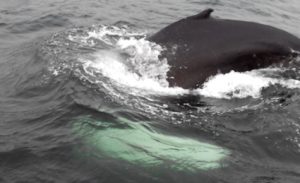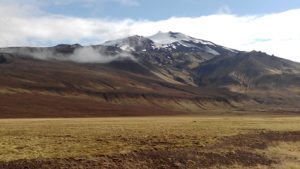Our Iceland Experience
A day out Whale-watching
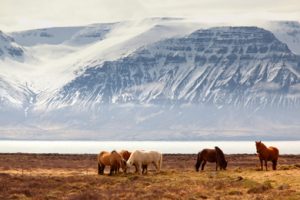
Icelandic horses grazing near Akureyri, Iceland
I can’t confess to anyone how fast I drove our hire car along that almost deserted road running along the western shore of the fjord, hoping to get to the whale-watching harbour before the ship’s scheduled departure at 9.30 am.
“When they see us, or people like us, the locals must think that the tourists are crazy”, observed Florinda.
And in truth, driving like that did seem out of place, taking into account that in this part of Iceland all roads except the main ring Road 1 were virtually empty, and that we had not encountered anybody speeding over the last week while driving in the country. I was no expert in the Icelandic temperament, but the people didn’t seem to do stress the same way I could.
We sped past a few local ladies out for a walk on the edge of the harbour-side settlement which passes as a village in these parts. I imagined their surprised comments as we pulled up into the harbour and spotted the likely looking vessel comfortably moored by the sea wall. That’s funny, we couldn’t see the activity one would normally associate with a whale-watching cruise about to depart in a few minutes’ time.
We dithered between the moored vessel and a large warehouse which was obviously the commercial base. The only person we could see was a blond middle-aged man in an anorak, walking calmly towards us. He was smiling gently, and to me he looked like a skipper.
“Hello, is this where we get the tickets for the whale-watching?” I asked.
“Yes” he said, “You’re a bit early though, we don’t depart until 1.30 in the afternoon”.
About half an hour later we were back at the guesthouse. Slightly deflated. We approached the reception desk, our source of local information, including the whale-watching enterprises and their timetables.
“Um, the departure from Dalvik is in fact at 9am, not 9.30. And at Hauganes they only do an afternoon departure at 1.30 pm,” I pointed out to the attentive young lady who had previously provided us with some slightly inaccurate information.
“Oh really?”, she smiled, “Thank you for telling me”.
So what could we do for the next 3 hours? We retired to our room to consult leaflets and things over a quick cup of instant coffee. I thought hard while staring out of the window watching some of the numerous and noisy Redwings feeding in the clump of Rowan trees within metres of our room. There were Common Redpolls there too, I could hear them, but they moved so fast it was so hard to get a decent view of any of them.
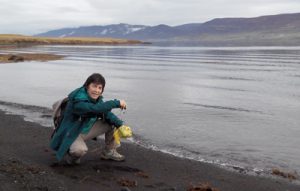
Florinda, a Black sand admirer, Akureyri, Iceland
Our solution was to take a gentle walk along the shores of the fjord – unfortunately we were also just a little too late to go horse-riding. As a complete beginner I’m not sure whether I was relieved or not about that. Still, the walk was enjoyable, the waters were calm and we spent some good time watching Long-tailed Ducks, Common Eiders and Glaucous Gulls at close range, and in calm, gentle sunshine. I kept scanning for the Diver (Great Northern?) I had seen from the guesthouse the previous evening, but it seemed to have moved on. Turning inland and reaching the local road was not enough to call us towards the “forest”, which, by Icelandic standards was obviously quite an eye-catcher, but by my Anglo-Catalan standards was a rather lifeless rectangle of land planted with single-aged spruce trees, where the only birding appeal might be to get close to a slow or unwary Redpoll.
Some time later, we pulled into a parking space in the harbour well before 1 o’clock: we weren’t taking any chances! The possibility of seeing whales was one of the major highlights of this trip for Florinda, we knew there were no guarantees, but the pressure was on. We paid, each found a red jumpsuit which fit us and, feeling slightly awkward in this unfamiliar attire, filed out towards the vessel among a growing group of similarly-clad visitors. The captain was there again, with his enigmatic smile.
“What are the chances of Humpback Whales?” I asked, searchingly.
“That depends on them, but should be good”, came the not-quite reassuring reply.
As our ship set off we could feel a breeze working up and see grey clouds gathering – the lovely calm conditions of the morning were changing and the forecast was for overnight snow. Hopefully we still had a few good hours before things got rough, time enough for us to see a Humpback Whale or two, and to get back to dry land without Florinda having cause for getting seasick!
We had just turned into the open fjord when the first mate shouted to the skipper, who immediately announced that there were Humpback Whales, 3 or so, and gave full throttle across the fjord towards the whales. Could that really be true? He wasn’t having us on, was he? Some of us held on the rails and peered out past the stern, following our line of travel to try and spot a Humpback Whale, and yes! There was a huge watery spout being blown high into the air! Then a tail fin breaking the surface and disappearing below! There really were whales out there!
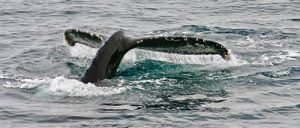
Whale-watching: Humpback Whale tail fluke
The next couple of hours were better than we had even dared to dream: we came into close contact with at least a dozen Humpback Whales of different ages, one time so close that one surfacing whale blew its watery spout into my gaping mouth. It was light and salty. We saw the barnacles growing on their bodies, the nicked fins of some, and could tell when they were just swimming or going for a dive. Another vessel had sped up from Akureyri to join us, and after many close contacts with the Humpacks the skipper could see we were all well-satisfied and offered coffee, biscuits and buns to all.
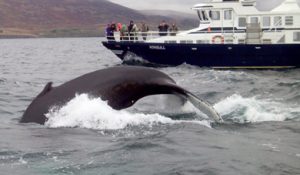
Humpback Whale submerging. Whale-watching north of Akureyri, Iceland
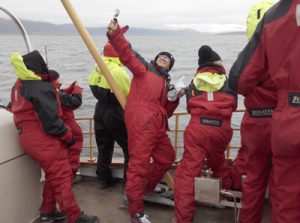
Someone’s just caught a fish!
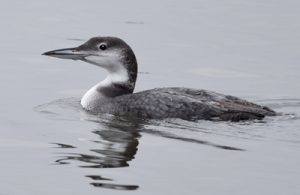
Great Northern Diver, or Common Loon, Iceland
Turning back to the western shore we hadn’t finished yet. There were good numbers of gulls in flight over the water, including Black-legged Kittiwakes, Glaucous and Iceland Gulls – I’d never imagined I’d see so many in one place- , and a single Great Skua. Common Eiders seemed to be more common closer to the shore, and didn’t seem too put off when we dropped anchor to do a spot of line fishing.
Result: the Chinese tourist was exultant as he caught a fish – and took a selfie; I too caught my first-ever fish; and what about Florinda, would she catch a fish too? Maybe next time – she had already seen so many Humpback Whales, better than a dream come true, so how much more can you ask for?!
